Lincoln Valley Speedway
by
John Hand II
What started life as a single Carrera box set in 2002 quickly grew into two sets, then three, and finally into the track you see here. While experimenting with various plans on the floor of my father’s garage, it was decided that when the final track was built, it would utilize model railroading techniques for scenery and construction, providing a unique model racing environment.
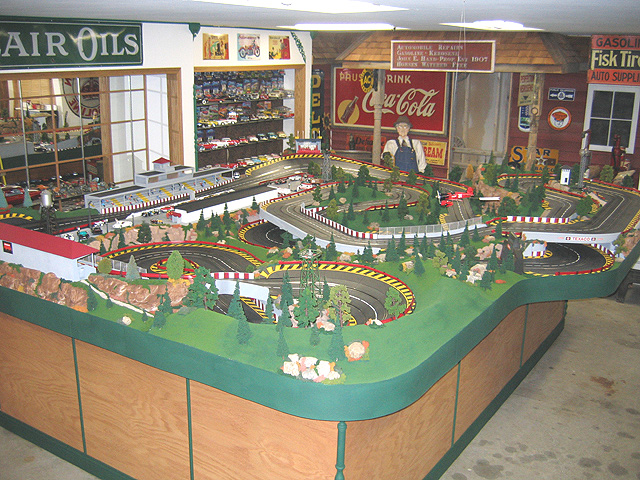
The entire track uses Carrera products, and to keep things simple, Carrera power supplies and controllers were used as well. Each lane measures just over 85 feet and has its own Carrera 14.8V transformer. To avoid voltage drop across the track, each lane has five 14 gauge power jumper lines.
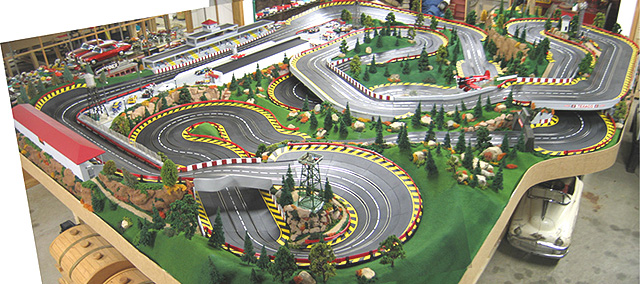
The table construction consists of 2 x 4s for framework, ¾” plywood for the table-top, and 1 x 4 girders for support on elevated track sections. The table is also mobile, using 10 casters beneath the framework in case the table would need to be moved.
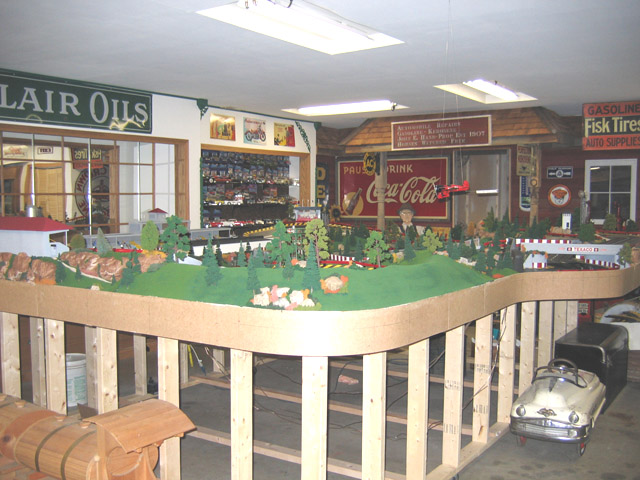
Overall, the table-top measures about 10’ x 16’, with the Texaco Bridge and Tower Corner section cantilevered off of the main framework. Once the track’s layout was established on the garage floor, the main table was built. The cantilever section was then added and the support girders were placed to secure the higher sections of track

Our track design did not have a specific target to meet; rather, it was more of a challenge to tastefully fit as much track into our allowed space as possible. We wanted to incorporate elements of real race courses in our design, such as Laguna Seca’s corkscrew, the Carousel at Road Atlanta, and Monza’s Parabolica, in addition to a few straights for speed.

Our result was a highly challenging course with elevation changes, banking, and a very tricky Laguna Seca-style corkscrew that leads into the Parabolica. With the track assembled and in place, the wiring was then completed, and testing began immediately.
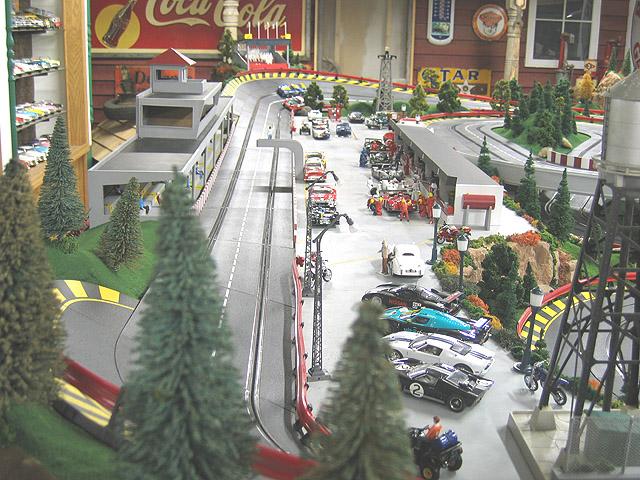
It was decided that strategic placement of fencing and trees would be necessary to keep cars on the table following the flight of a GT-40 off of the track at the Parabolica. With the track design finalized, the table was trimmed with a Masonite border and scenery construction began.
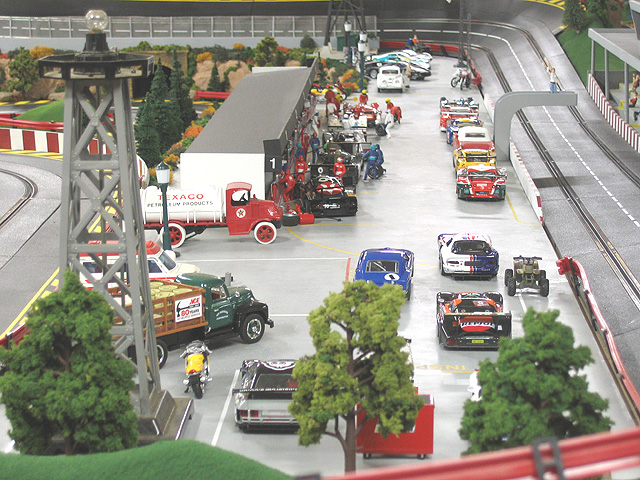
The track’s scenery was entirely the result of my father’s time and efforts, and money. Having built a large HO scale train layout a decade earlier, he used the same techniques on the racetrack. Grassy hillsides were formed by placing drywall mesh over wooden forms and topped with plaster. The rock cliffs are plaster casts from rubber molds, and many of the track’s large boulders were pulled out of the driveway to the garage.
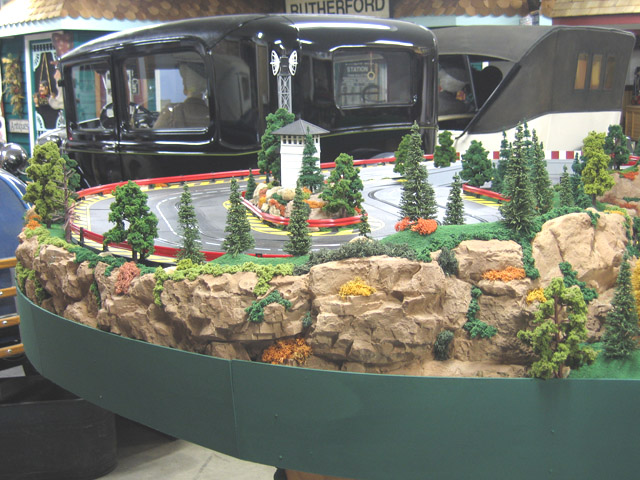
Areas that would have grass were first painted green, and then model railroad landscaping materials were used for the vegetation. Several pounds of “grass” were used, and the track has over 200 trees, many of which were made by a fellow from nearby, in Boone, Iowa. The two larger grandstand structures, as well as the pit building, were built from scratch.
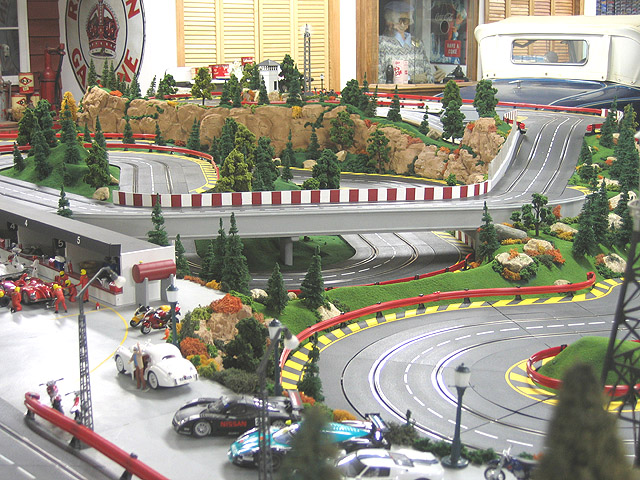
The bridges and abutments are built from Masonite, while the bridge at the Corkscrew was especially challenging. To achieve the proper curvature in the wall on that bridge, plaster was used for both aesthetics and reinforcement. It was a good choice, as the entrance to the corkscrew has seen its fair share of mishaps.
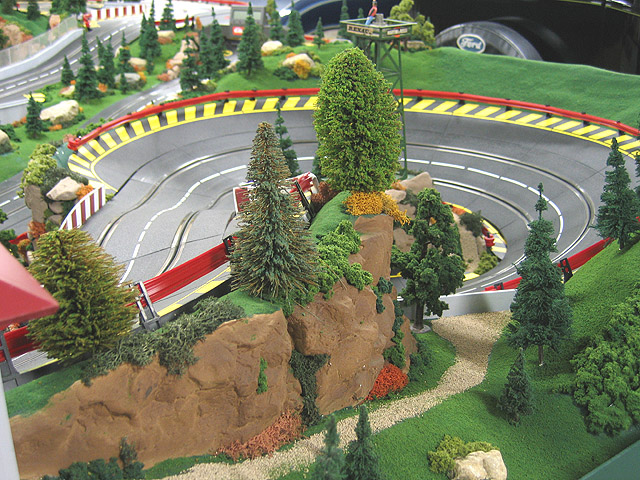
My father completed the scenery in 2005 and soon thereafter worked on the skirting around the table to give it a finished appearance. It truly looks like a piece of furniture, rather than a 170 sq. ft. toy. In its current state, the track and scenery are complete, but small alterations continue periodically. The addition of spectators and scale lights for nighttime racing are the only remaining projects to complete. We race a wide range of cars, with the bulk of our collection containing both modern and historic sports cars. To date, the course record holder is a Scalextric ’69 Mustang with a sub-7 second lap time. Challengers to this record are welcome.
-John Hand II - J2 Automotive Art